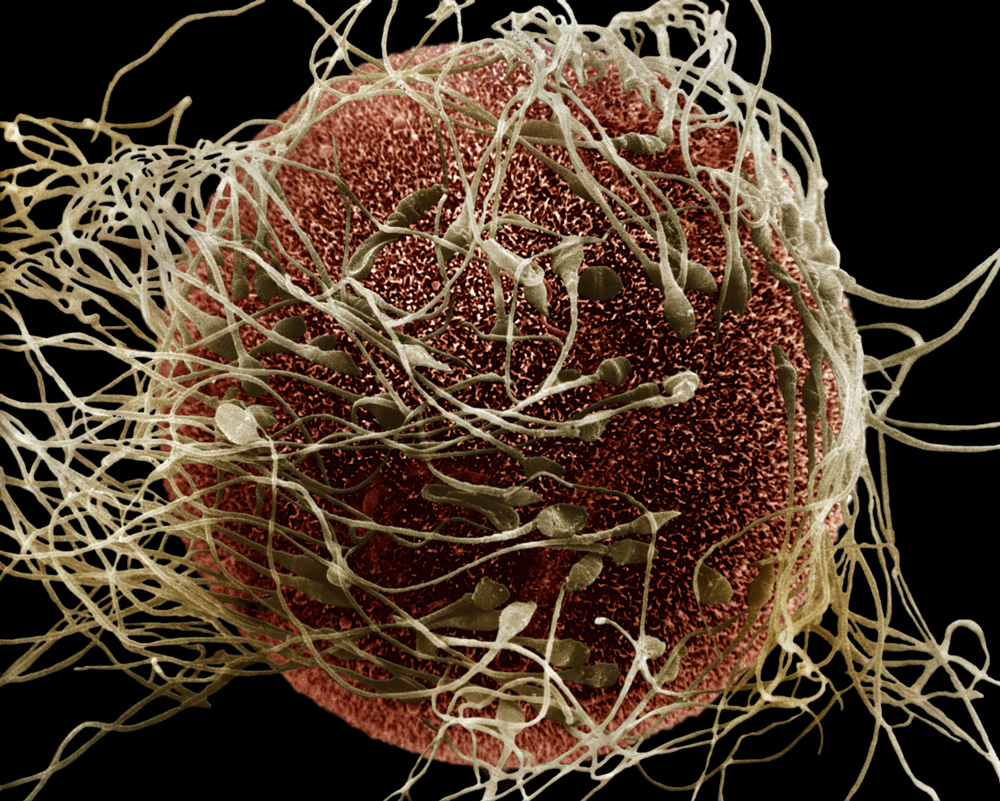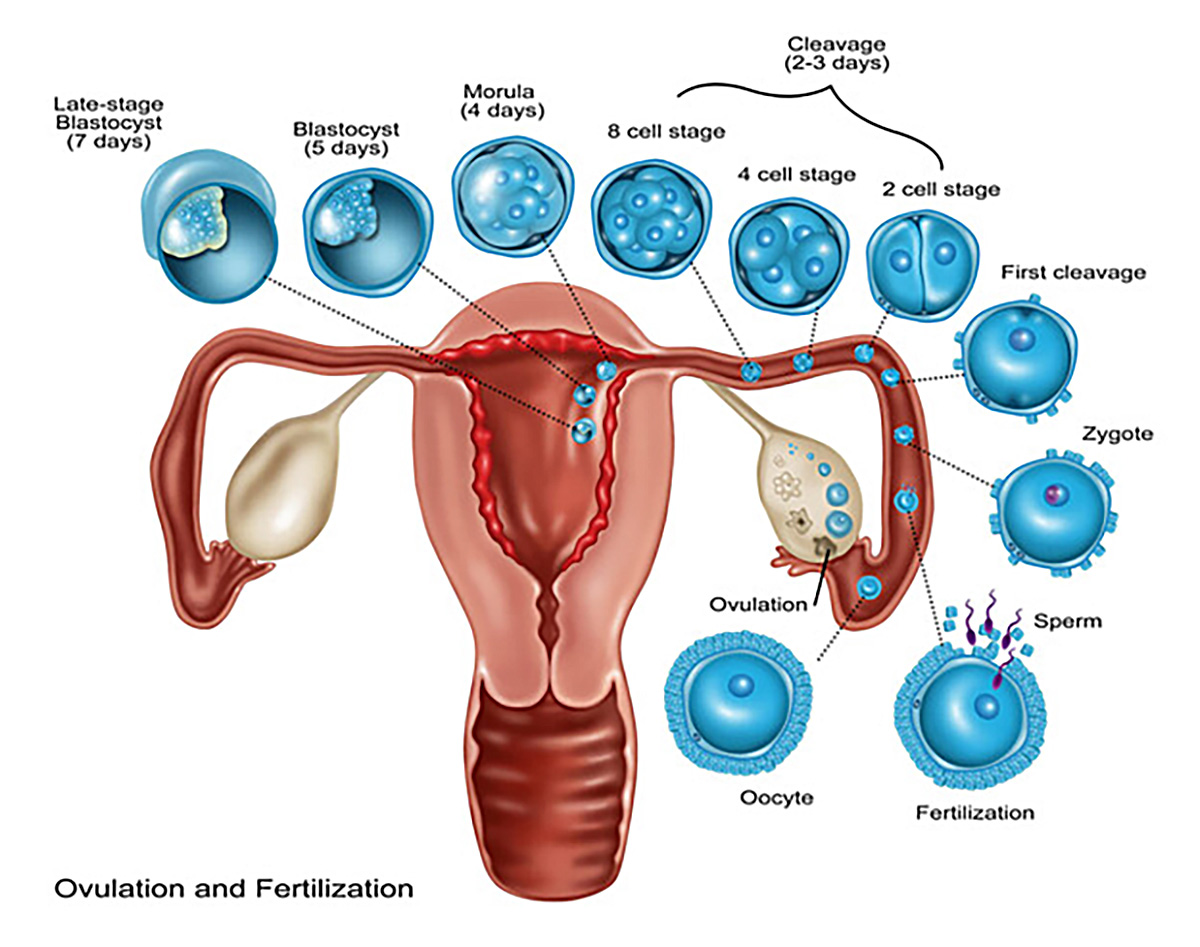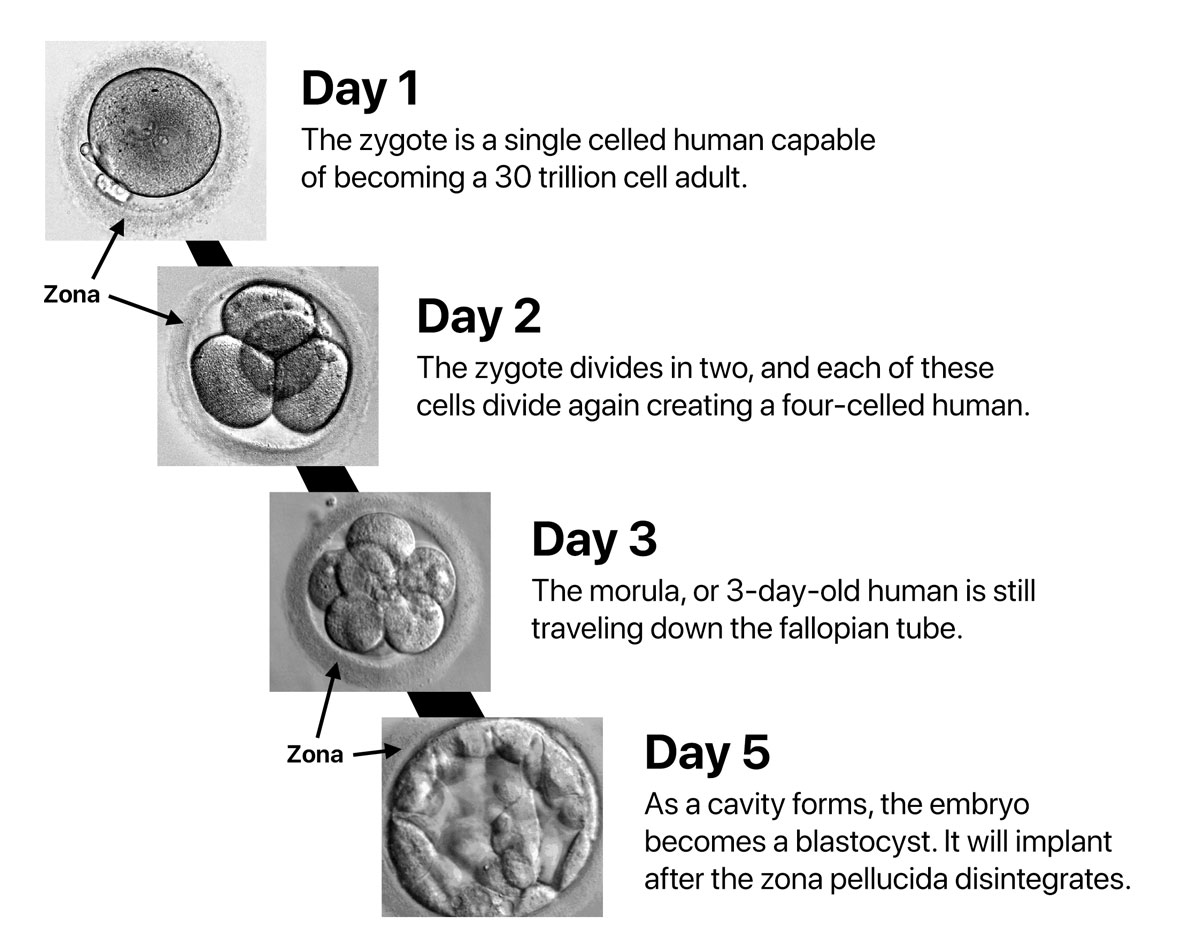Both the sperm and the egg are alive and contribute half of the genetic information needed to create a new human being. A new life – a unique human individual – is formed at conception, also called fertilization, when a man’s sperm combines with a woman’s egg inside the fallopian tube. The resulting single-celled human is a zygote.2 The zygote’s DNA, packaged into chromosomes, has every instruction the zygote needs to develop, grow and become an adult. The DNA sequence produces the genetic variation that creates a person’s biological individuality, including sex, eye color, and other physical traits. Individuals with XX sex chromosomes are female and those with XY sex chromosomes are male.
Become A Defender of Life
Your donation helps us continue to provide world-class research in defense of life.
DONATECharlotte Lozier Institute
Phone: 202-223-8073
Fax: 571-312-0544
2776 S. Arlington Mill Dr.
#803
Arlington, VA 22206

Week 3
Fertilization and journey to the uterus
- Post-conception week 1
- Days 0-6
- Gestational Week 3
The week starts at fertilization when the sperm and egg unite creating a unique single-celled human, the zygote.
The embryo travels from the fallopian tube to the uterine cavity.
The original cell divides again and again, faithfully copying his or her genetic information. By the end of the first week after conception, the embryo has several hundred cells.1
The human body has an amazing automatic growth process that sets to work once the egg and sperm have joined. Each step in the first week after conception is essential for the health and welfare of the newly created human! This week is the third week after the mother’s last menstrual period, corresponding to gestational week three.
There is enough genetic variation that no two humans have been, or ever will be, genetically identical.4 In fact, the probability that two non-twin siblings have the same combination of chromosomes is one in 7 trillion!5 Even identical twins, who begin life from a common egg-sperm pairing, often have small genetic differences, called copy number variations, in which one small section of DNA gets copied more than once.6 Therefore, every human individual is genetically unique. Over time, the single-cell zygote will become a 30 trillion cell adult.7

Within 24 hours of ovulation, one sperm penetrates the egg, fertilizing it. Now the cell is a zygote – a new human being. Within seconds, that sperm triggers a chemical change in the outer coating of the woman’s egg, called the zona pellucida. This prevents other sperm from entering the egg.8 Both the male and female chromosomes are contained within a membrane casing called a nucleus. The sperm keeps its tail until it has delivered the male’s nucleus adjacent to the female’s nucleus. The sperm’s tail falls off and the membranes surrounding the chromosomes from the egg and the sperm degenerate so that the chromosomes from both mom and dad can join for the first time.9
Between 12 and 30 hours after the egg and sperm are joined, the DNA replicates. Then the two identical copies of chromosomes move to opposite sides of the cell, and the cell divides in two. Within 40 hours of fertilization, the two new cells divide again creating a four-celled human. The early embryo’s cells divide rapidly, each time doubling the number of total cells. Each of these cells is capable of becoming any of the cells in the human body. Interestingly, each new set of cells gets smaller and smaller, fitting within the original zona pellucida, as shown in the picture below. This early embryo, called a morula, resembles a tiny raspberry.10

Even as the cells keep dividing, tiny hair-like structures in the fallopian tube sweep the morula towards the uterus. The morula stretches into a hollow ball and becomes a blastocyst. The blastocyst arrives at the uterus between four and five days after conception. The embryo releases enzymes to break down the zona pellucida. The embryo can implant after it sheds the zona pellucida.11 Some studies suggest that the embryo may release signals that form a biochemical connection with his mother, even before implantation.12
About six days after fertilization, the early embryo begins to implant in the uterus. The outer cells in the blastocyst have special sticky molecules that help the blastocyst bind to the wall of the uterus.13 The wall of the uterus will start providing nutrients to the developing embryo as the embryo embeds. The embryo is now in his permanent home in his mother and will stay there until ready for birth.










